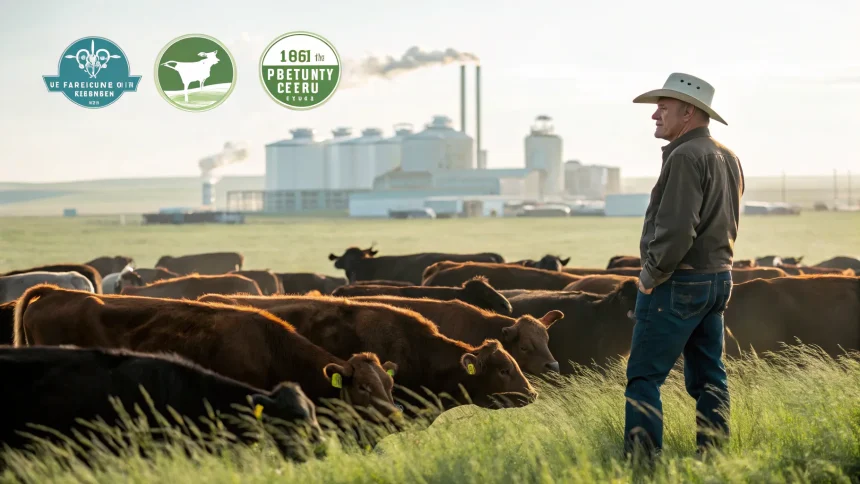Ranchers are pushing back against Donald Trump’s promises to lower food costs, saying the plans treat effects rather than causes of high beef prices. The criticism surfaced as grocery bills remain elevated and cattle markets show stress in several regions. The dispute centers on what drives prices at the meat counter and who benefits in the current system.
Producers argue that short-term political fixes have little to do with herd size, packer concentration, and volatile input costs. They say those forces shape beef prices for both families and ranchers. The debate matters for rural communities, processors, and consumers who have watched prices climb since the pandemic.
Ranchers push back
Producers say recent ideas to cut prices focus on quick relief, not structural change. They argue that tariff threats, tax tweaks, or broad deregulation would do little for the feedlot and cow-calf levels where margins are tight.
“Symptoms not the problems.”
That blunt summary reflects growing frustration. Independent ranchers claim they face fewer buyers, higher costs, and limited leverage. They want solutions that improve competition and price discovery.
What is driving beef prices
USDA data shows the national cattle herd has shrunk in recent years due to drought and high feed costs. A smaller herd means fewer cattle for slaughter, which can lift wholesale and retail prices. Beef prices hit records in 2023 and 2024 as supplies tightened.
At the same time, four large meatpackers handle most U.S. beef processing. Industry and government estimates place their combined market share at roughly 80% to 85%. Fewer dominant buyers can limit options for ranchers, especially in regions served by only one or two plants.
- Herd size: Contraction reduces supply and supports higher prices.
- Input costs: Feed, fuel, and labor remain elevated for many operators.
- Concentration: A few packers hold major bargaining power.
- Market transparency: Some sales lack clear, timely price signals.
These forces intertwine at the grocery counter. Shoppers pay more for steak and ground beef, while ranchers say their share of the consumer dollar has not kept pace.
Policy ideas on the table
Trump has argued that broader economic moves could lower food costs. His camp points to cheaper energy, lighter regulation, and aggressive trade stances as tools to ease inflation. Supporters say any policy that cuts transportation and production expenses should help bring prices down.
Ranchers counter that beef-specific steps matter most. Producer groups have long pushed for stronger antitrust enforcement and fairer contracts. Some back stricter limits on packer control of cattle supplies and more negotiated cash trade to strengthen price discovery.
Others want country-of-origin labeling to give shoppers clearer choices. They say transparency could support U.S. producers if consumers choose domestic beef. Critics warn new rules can carry compliance costs and risk trade disputes if not designed carefully.
The Biden administration has already steered funding toward meatpacking capacity and transparency. It has also pursued antitrust scrutiny across agriculture. Ranchers say more action is needed, while packers argue that scale and efficiency keep meat affordable.
Industry impact and what to watch
Herd rebuilding will take time, even if rain and feed improve. Calf crops need multiple seasons to recover. That suggests tight supplies could linger, keeping prices firm into the near term.
Market watchers are tracking several flash points. They include any new competition rules for packers, grants for regional plants, and updates to price reporting. Trade outcomes will also shape cattle and beef flows.
For consumers, relief depends on both supply recovery and costs along the chain. If fuel, labor, and packaging stay high, retail prices may remain sticky. Retailers and processors say they face their own cost pressures and thin margins on some products.
For producers, leverage in the sale barn is central. More bidders and clearer prices generally mean better checks for ranchers. That is why many call for reforms that boost transparency and competition rather than broad economic fixes alone.
Ranchers’ core message is simple. If policy does not address herd health, market power, and truthful pricing, families will not see sustainable relief. The debate over meat prices will remain a campaign flash point as both sides test their ideas against hard market realities.







